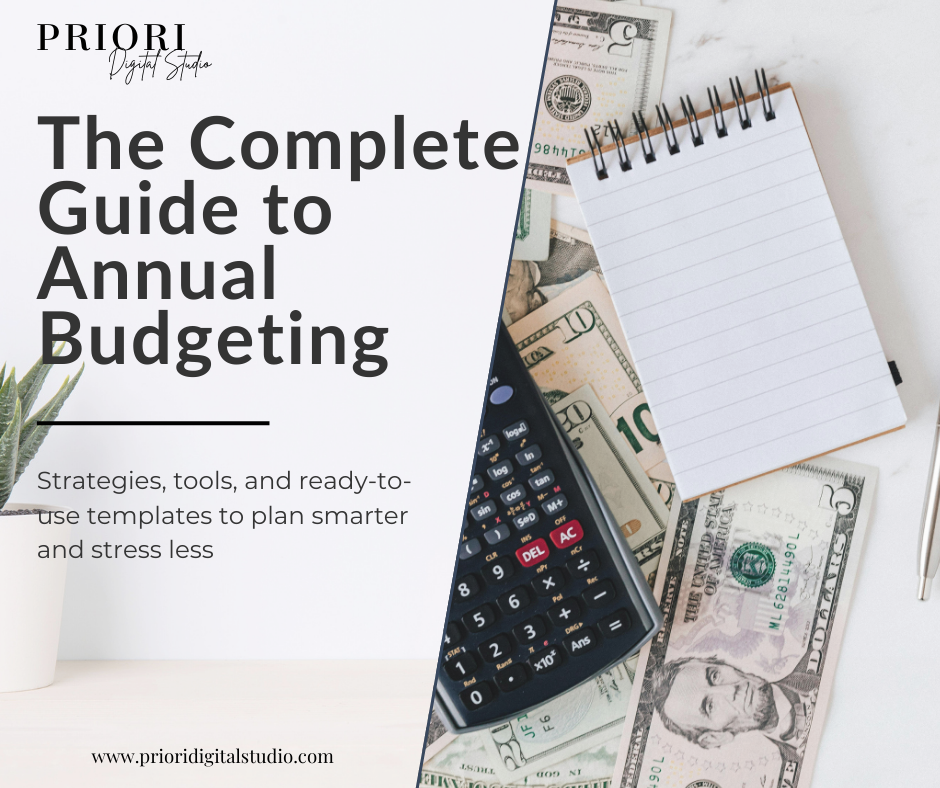Avoiding your budget because it feels overwhelming? You’re not alone. In 2025, with inflation still affecting everyday expenses, housing costs climbing, and economic uncertainty on everyone’s mind, annual budgeting has never been more important, or more empowering. Instead of just reacting month-to-month, an annual budget gives you the big-picture view of your financial life, helping you align daily decisions with long-term goals like buying a home, paying off debt, or building a safety net.
The benefits of looking at your money across a whole year are clear. Annual budgeting helps you anticipate large, irregular expenses, like holiday spending, insurance premiums, or vacations, before they sneak up on you. It also forces you to plan for financial goals proactively, not just survive paycheck to paycheck. Compared to monthly or short-term budgeting, it’s like switching from a snapshot to a panoramic photo of your finances: you suddenly see more detail, more connections, and more opportunities to adjust. If you're unsure which timeframe is best for you, our comparison of Monthly vs Annual Budgeting can help you find your perfect financial rhythm.
In this complete guide, we’ll walk you through everything you need to know: 10 Proven Budgeting Strategies that actually work, modern digital tools and calculators that simplify the process, and ready-to-use templates you can adapt today. We’ll also dive into a professional all-in-one solution, the Ultimate Annual Budget Spreadsheet, designed to take the stress out of financial planning and make your numbers work for you.
We’ve helped thousands of people navigate personal finance in times of uncertainty, and the lesson is always the same: budgeting doesn’t have to be hard or scary. With the right approach, it becomes one of the most valuable tools for peace of mind and financial freedom.
Ready to take control of your year? Let’s get started.
What Is Annual Budgeting?
Avoiding your budget because it feels overwhelming? You’re not alone. More than 60% of Americans don’t know how much they spent last month according to a recent survey by Intuit. But budgeting doesn’t have to feel like a chore. One strategy that can make the process less stressful and more effective is annual budgeting.
Instead of focusing only on the month-to-month grind, an annual budget zooms out to give you a big-picture perspective of your money. Think of it as the GPS for your financial journey , it helps you see where you’re heading and avoid costly detours.
Definition: What Is Annual Budgeting?
Annual budgeting is the process of planning your income, expenses, savings, and debt payoff over an entire year. Unlike a monthly budget, which tracks immediate cash flow, an annual budget accounts for long-term goals and irregular expenses.
Andrew Westlin, a financial planner at Betterment, explains: “Monthly budgets are great for keeping tabs on bills, but an annual budget ensures you don’t forget the bigger picture , like holiday spending, tax bills, or summer vacations.”
In short, an annual budget is less about micromanaging daily spending and more about aligning your money with your life goals.
Benefits of Annual Budgeting
So why take the time to plan for 12 months instead of just one? Here are the main advantages:
-
Long-Term Perspective: Annual budgeting helps you plan for major financial milestones such as retirement contributions, paying off debt, or saving for a vacation. It also makes investments and big-ticket purchases feel less intimidating because you’re spreading the cost over time.
-
Less Stressful Than Monthly Budgeting: Month-to-month budgeting can feel restrictive, especially if one big bill throws everything off. Annual budgeting smooths out the bumps by preparing you for seasonal spikes like back-to-school shopping or holiday gifts.
-
Plans for Irregular & Seasonal Expenses: Did you know that the average household spends over $1,500 on holiday shopping each year (National Retail Federation)? Without an annual plan, these irregular expenses sneak up and derail monthly budgets. Annual budgeting ensures you’ve already set aside funds when they roll around, a concept known as How Sinking Funds Protect Your Budget from Financial Surprises.
Common Myths & Misconceptions
-
“Budgeting is restrictive.” In reality, budgeting is about giving every dollar a purpose. An annual budget can even increase your freedom, since you’ll know exactly what you can spend on things you enjoy, guilt-free.
-
“I’ll lose flexibility.” Annual budgets aren’t set in stone. You can revise them quarterly to adjust for life changes, raises, or unexpected expenses.
-
“It’s too complicated.” With modern tools like a Google Sheets budget spreadsheet or apps like You Need a Budget (YNAB), annual budgeting is easier than ever. Our guide to the Best Budgeting Tools for 2025 can help you find the right fit. Templates do the math for you, so you can focus on decisions instead of calculations.
Annual vs Monthly Budgeting: Key Differences
Here’s a side-by-side comparison to highlight how annual and monthly budgeting stack up:
| Feature | Annual Budgeting | Monthly Budgeting |
|---|---|---|
| Timeframe | 12 months | 1 month |
| Best For | Long-term goals, seasonal expenses, big-picture planning | Short-term cash flow, bill management |
| Stress Level | Lower (more flexibility) | Higher (easily derailed by one-off costs) |
| Tools | Annual budget templates, Google Sheets, planning apps | Monthly budget spreadsheets, envelope system |
| Flexibility | Can be revised quarterly | Adjusted month by month |
Why It Matters
Couples saving for a wedding, families managing childcare costs, or individuals paying off student loans, all can benefit from annual budgeting. By mapping out the year ahead, you’re less likely to fall into the “unexpected expenses” trap. As Kristen Gall, retail and shopping expert at Rakuten, notes: “Every dollar saved starts with a plan. Annual budgeting provides that structure.”
The real takeaway? Annual budgeting helps you stay proactive instead of reactive.
Take Action
If you’re ready to get started, try these steps:
-
Download a Best Free Google Sheets Budget Templates to map out income and expenses.
-
List seasonal or irregular expenses (like vacations, birthdays, insurance premiums).
-
Review and adjust your budget quarterly.
Why Annual Budgeting Works: Proven Strategies
Annual budgeting gives you the big picture. Instead of scrambling month-to-month, you plan your spending over 12 months, accounting for seasonal expenses, holidays, and life events. Research from the Consumer Financial Protection Bureau shows that households with a yearly plan are 45% more likely to meet savings goals compared to those only budgeting monthly. Think of it as your roadmap: you know when to tighten the belt and when you can splurge guilt-free.
Zero-Based Budgeting
-
What It Is: Zero-based budgeting (ZBB) is a system where every dollar has a job. At the start of the year (or month), you assign income across categories, housing, food, savings, entertainment, until there’s nothing left unallocated. Unlike traditional budgets, nothing is “carried over” automatically. You justify every expense.
-
Pros: Forces intentional spending; Increases savings rates (Harvard Business Review notes ZBB can improve efficiency by 10–20%); Helps eliminate wasteful or unconscious expenses.
-
Cons: Time-intensive, requires ongoing adjustments; Can feel rigid, especially if income fluctuates.
-
How to Implement with a Spreadsheet: Start with a budgeting Excel sheet template (many free ones are available, including from Microsoft Office and Vertex42). List all sources of income, then allocate every dollar into categories until the total equals zero. For a full breakdown, read Zero-Based Budgeting Explained.
The 50/30/20 Rule
-
Explanation: The 50/30/20 rule simplifies budgeting into three buckets: 50% Needs, 30% Wants, 20% Savings & Debt Repayment. This rule is especially helpful for beginners, it’s less about micromanaging and more about balance. See our complete guide: The 50/30/20 Budget Rule: A Modern Guide for Real Life.
-
Worked Example: Suppose your take-home pay is $4,000/month: Needs: $2,000; Wants: $1,200; Savings/Debt: $800. This structure ensures you’re consistently investing in your future while still enjoying today. According to the U.S. Bureau of Economic Analysis, the average household saves just 4.1% of disposable income, far below the recommended 20%. Using this method keeps you on track. For practical application tips, check out The 50/30/20 Rule in Practice.
Envelope & Sinking Funds Method
-
Perfect for Big Expenses: The envelope method is old-school: assign cash into physical envelopes labeled “groceries,” “gas,” or “holiday gifts.” Once the envelope is empty, you stop spending. The sinking funds method is its digital cousin: you set aside small amounts regularly for large expenses like weddings, vacations, or car repairs.
-
Why it works: Major expenses don’t sneak up on you. Instead of swiping your credit card for a $3,000 vacation, you’ve been saving $250/month for a year. Learn how this pairs with debt payoff in Sinking Funds & Debt Payoff: Two Financial Concepts That Transform Your Money.
-
Why Digital Sinking Funds Outperform Cash Envelopes: Cash is harder to manage in a digital-first economy. Online banks let you create multiple “sub-accounts” or goals within one savings account. You can label them “Car Maintenance” or “Christmas 2025” and automate deposits. Understand the key distinction in Emergency Funds vs Sinking Funds: What’s the Difference and Why You Need Both.
Hybrid Approaches
Budgets aren’t one-size-fits-all. Many couples and individuals combine methods.
-
Example: Zero-Based + 50/30/20: Use the 50/30/20 rule as a high-level structure, then apply zero-based budgeting within each bucket.
-
Why Hybrid Works: Hybrid models balance structure with flexibility. You avoid the rigidity of pure ZBB while still ensuring no dollar is left unaccounted for. A 2023 Fidelity study found that households blending methods were 28% more likely to stay under budget than those using only one system.
Common Mistakes to Avoid
-
Ignoring irregular expenses. Birthdays, holidays, and car repairs add up. Plan them in advance with sinking funds.
-
Being too rigid. Budgets should guide, not punish. Flexibility keeps you consistent.
-
Skipping reviews. Check progress monthly; annual budgets aren’t “set it and forget it.”
-
Not involving your partner. For couples, joint buy-in is key to long-term success.
Tools for Annual Budgeting
Budgeting is as old as money itself. From paper notebooks to advanced apps, people have always looked for ways to keep track of where their dollars go. But with so many tools available today, which one is best for creating an annual budget? The truth is, there’s no one-size-fits-all solution. For a detailed analysis, see Free vs Paid Budgeting Tools: Which Saves You More in the Long Run?
Traditional Methods: Notebooks and Planners
Before apps and spreadsheets, most households relied on pen and paper. Even today, physical notebooks and planners remain popular for their simplicity.
-
Pros: Tangible; Low-tech; Personal.
-
Cons: Limited analytics; Time-consuming; Harder to track over time.
Budgeting Apps: YNAB, EveryDollar, Mint & More
Digital budgeting apps exploded in popularity over the last decade.
-
Strengths: Automation; Visuals; Goal-setting.
-
Weaknesses: Cost; Privacy concerns; Overwhelming features.
-
Why Many Users Abandon Them: A 2023 Deloitte study found that nearly 40% of people who download budgeting apps stop using them within 90 days.
Spreadsheets: Google Sheets & Excel
If budgeting apps feel restrictive, spreadsheets offer unmatched flexibility.
-
Why They Dominate: Customization; Transparency; Affordability.
-
Comparison: Free vs Paid Templates: Free Google Sheets budget templates are great for beginners. Paid templates offer professional design, built-in dashboards, and advanced automation.
DIY vs Professional Templates
So when should you DIY, and when should you go pro?
-
DIY (Free Templates or Self-Built): Best for simple budgets or if you enjoy tinkering.
-
Professional Templates: Ideal for households with complex finances (multiple incomes, side hustles, sinking funds). Include pre-built charts, automation, and polished formatting.
-
Rule of Thumb: If your budget has fewer than 10 categories, a free template may be enough. If you’re managing joint accounts, annual goals, and irregular expenses, a professional template can be a smart upgrade.
Final Thoughts
The right tool for annual budgeting is the one you’ll actually use. Next Steps:
-
Download a Best Free Google Sheets Budget Templates
-
Explore the Best Budgeting Tools for 2025
Deep Dive: The Ultimate Annual Budget Spreadsheet
Annual budgeting can feel overwhelming, between tracking bills, planning for emergencies, and saving for the future, it’s no wonder many people give up halfway through the year. But with the right tool, you can simplify the process and stay in control. That’s where a well-designed budgeting spreadsheet shines.
Why an Annual Budget Spreadsheet Works
Before we get into the details, let’s zoom out. Why choose a spreadsheet over an app or notebook?
-
Transparency: Unlike apps that hide formulas, spreadsheets show you exactly how numbers add up.
-
Customization: Every household is different. Spreadsheets let you tailor categories and dashboards to your needs.
-
Affordability: ...a template costs far less than recurring app subscriptions.
1. Budget Template Google Sheets
At the core of the system is the annual budget template.
-
What it does: Tracks income and expenses month by month; Rolls everything up into annual totals; Visualizes categories with built-in charts.
-
Comparison: Free Google Sheets budget templates exist, but most lack automation. Our review of Best Free Google Sheets Budget Templates (and Why Paid Options Save You Time) explores this in depth.
2. Net Worth Spreadsheet
Your budget isn’t just about cash flow, it’s about overall financial health.
-
What it does: Tracks assets and liabilities; Calculates your net worth month by month.
-
Why it matters: Net worth is the most powerful long-term indicator of progress. This is a key part of any plan to Build Your Wealth Roadmap.
3. Debt Payoff Calculator Spreadsheet
Debt can be one of the biggest roadblocks to financial freedom.
-
What it does: Lets you list balances and interest rates; Simulates debt payoff using snowball or avalanche methods.
-
Why it matters: According to the Federal Reserve, the average American household with credit card debt carries about $7,951 as of 2024. Use our Debt Calculator Strategies guide to choose the fastest path to freedom.
4. Sinking Funds Spreadsheet
Not every big expense is an emergency, sometimes you see it coming.
-
What it does: Lets you create categories for large expenses; Breaks annual goals into manageable monthly contributions.
-
Why it matters: Without sinking funds, you’re forced to dip into savings or rack up debt. Learn more about How Sinking Funds Protect Your Budget from Financial Surprises.
5. Investment Forecast Spreadsheet
Budgeting isn’t just about managing expenses, it’s about growing wealth.
-
What it does: Projects portfolio growth based on contributions and returns.
-
Why it matters: Forecasting gives you confidence and helps with long-term plans like Retirement Planning on a Budget.
How to Get Started with Annual Budgeting
Annual budgeting may feel like a big project, but breaking it down into clear steps makes the process both manageable and rewarding.
Step 1: Define Your Financial Goals
Before you start plugging numbers, clarify what you want your money to accomplish. This is the first step to Build Your Wealth Roadmap.
Step 2: Collect Your Data
A budget is only as accurate as the information it’s built on. Start by gathering income sources, fixed and variable expenses, debts, and savings information.
Step 3: Choose Your Budgeting Method
Decide how you want to structure your money. Review the 10 Proven Budgeting Strategies to find your fit, whether it's the 50/30/20 Rule, Zero-Based Budgeting, or even the Dave Ramsey Budget Method.
Step 4: Set Up Your Spreadsheet
Bring your plan to life. Our guide to the Best Free Google Sheets Budget Templates is a great place to start.
Step 5: Track Monthly → Review Quarterly → Adjust Annually
A budget isn’t a “set it and forget it” tool. To stay effective, schedule regular check-ins.
Step 6: Stay Consistent with Routines & Check-Ins
Consistency matters more than perfection. For a powerful reset, try The No-Spend Challenge to jumpstart your habits.
Annual Budgeting Tips for Success
-
Be realistic with your estimates. If your monthly food budget always runs over, adjust it.
-
Automate savings and bill tracking. This reduces mental load. The Paycheck Budget Method is great for this.
-
Regularly check dashboards for quick course corrections.
-
Use challenges for motivation. A No-Spend Challenge can inject excitement.
-
Adjust goals as life changes. Revisit your budget quarterly.
Free Templates vs Paid Solutions
Free budget templates are great for testing the waters. But they often come with limitations: manual updates, limited insights, and lack of customization. This is where professional templates save the day. A polished solution saves time, ensures accuracy, and provides insights free tools can’t match. For a full breakdown, read Free vs Paid Budgeting Tools.
Frequently Asked Questions
What’s the best free budgeting template in Google Sheets?
There are several good options. For simple needs, a free template works well. But for advanced features, you may need to look at paid options. We've reviewed the Best Free Google Sheets Budget Templates.
Can I use Excel instead of Google Sheets?
Yes! Most budget templates are designed for both.
Do I need budgeting if I already use a financial advisor?
Yes. A budget keeps your day-to-day spending aligned with bigger goals. Think of it as part of your overall strategy for Wealth Management Without Expensive Software.
How do I stick to a budget for 12 months?
Consistency is key. Use a spreadsheet with built-in reminders and schedule regular check-ins.




Share:
Zero-Based Budgeting Explained
The Passive Income Pathway: How to Start a Digital Products Business on Etsy